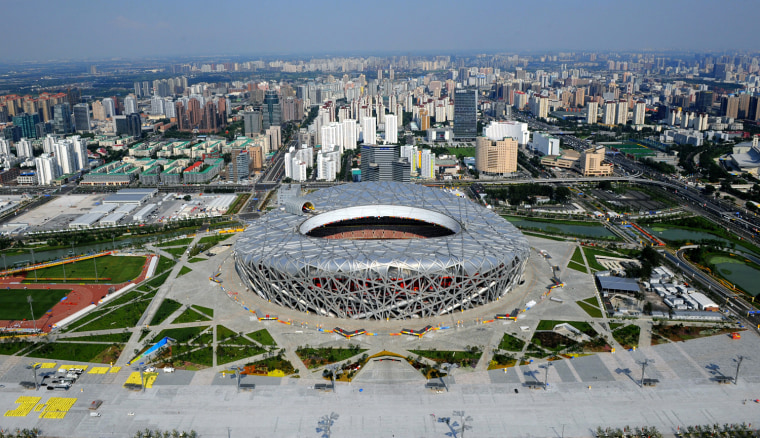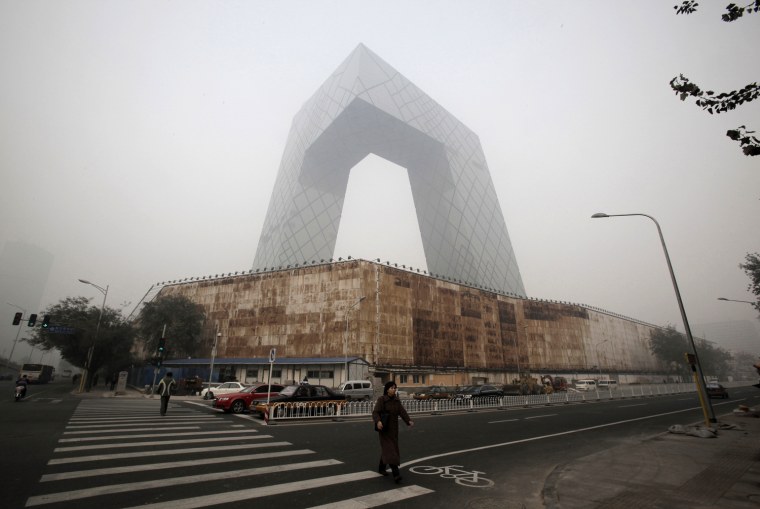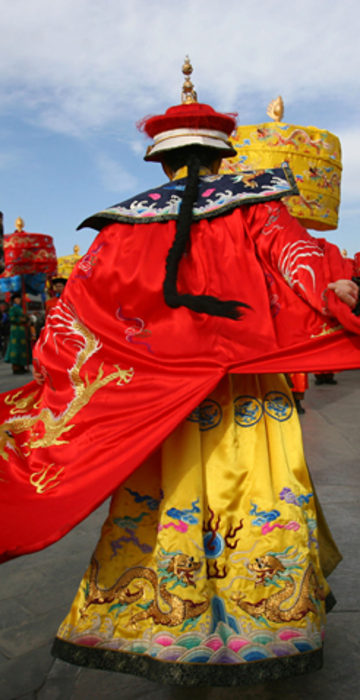
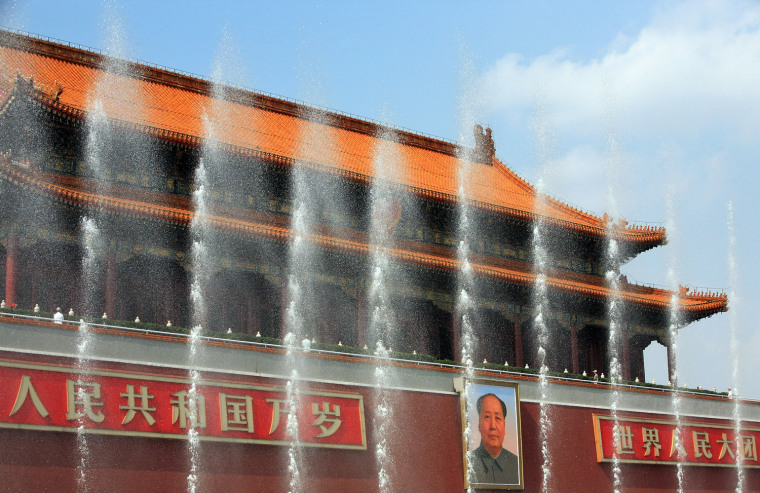
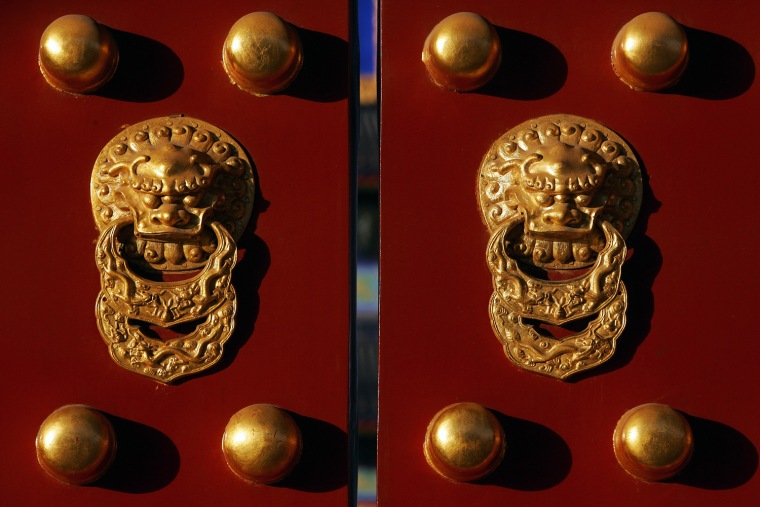
Place for prayer
The highlight of Bejing's Temple of Heaven is the Hall of Prayer for Good Harvests. The hall is a circular wooden structure designed with a unique architectural style -- there are no nails, beams or crossbeams used. The hall was were emperors came to pray for good harvests on the 15th day of the first lunar month every year.
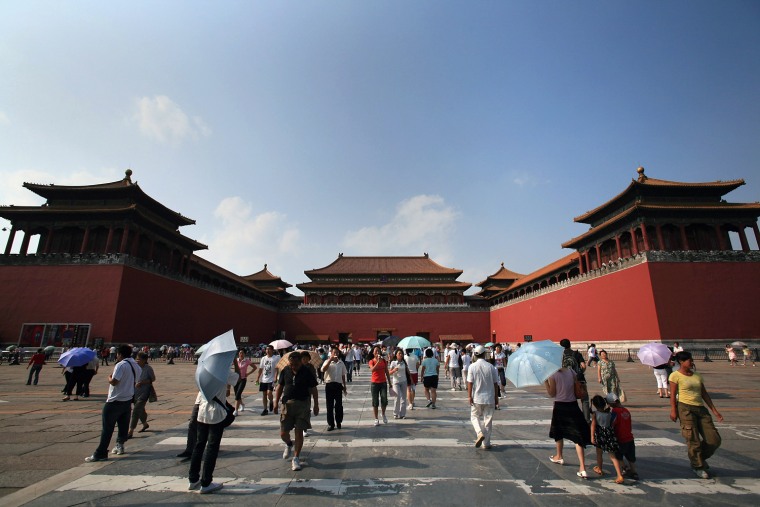
Forbidden no more
Each year, thousands of tourists visit the Forbidden City in Bejing. The structure is the best preserved palace in China and is the largest palatial structure in the world. For more than 500 years, 24 emperors ruled over China from the Forbidden City, now also known as Palace Museum.
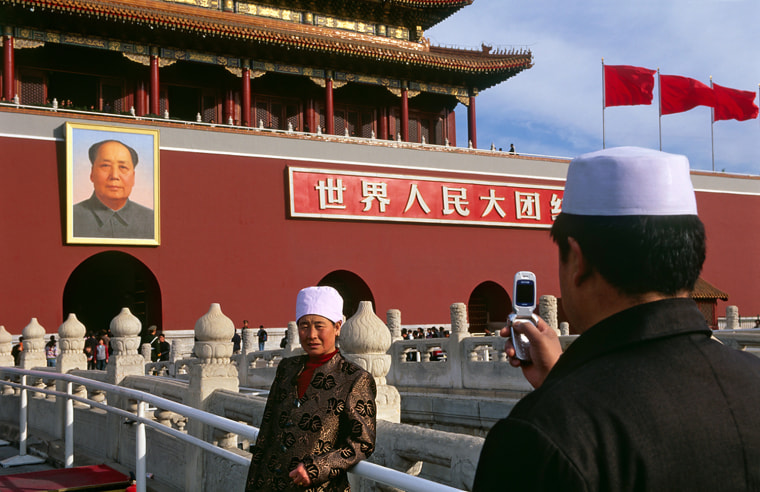
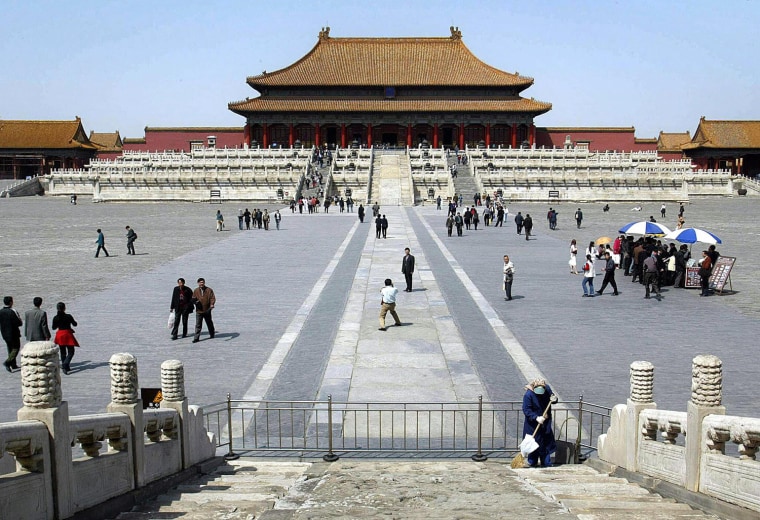
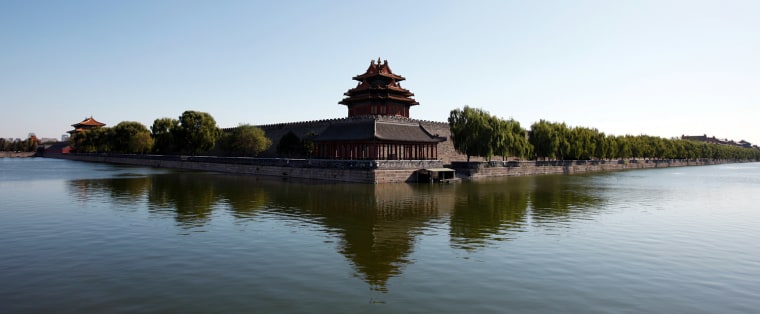
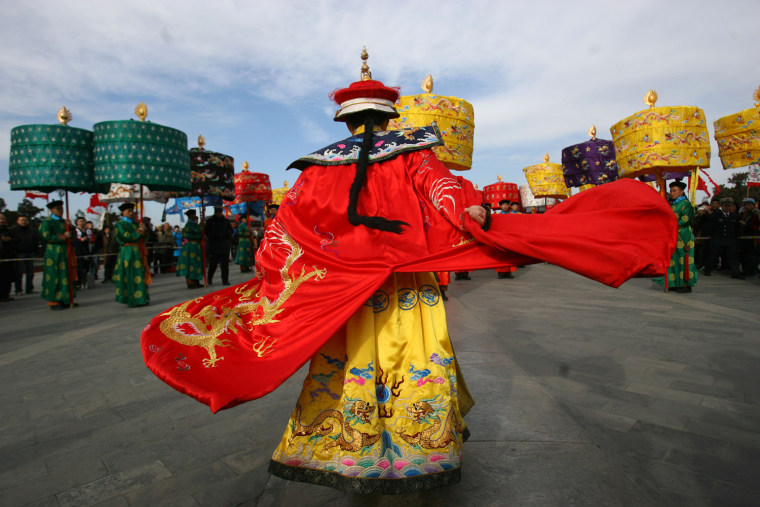
Retracing historic footsteps
A performer dressed in the imperial yellow costume of former emperors rehearses his steps with others during an imperial rites ceremony during the Chinese lunar new year holidays at the Temple of Heaven on Jan. 20, 2009. According to records, during some 500 years, various emperors performed more than 600 imperial rites ceremonies in the Temple of Heaven.
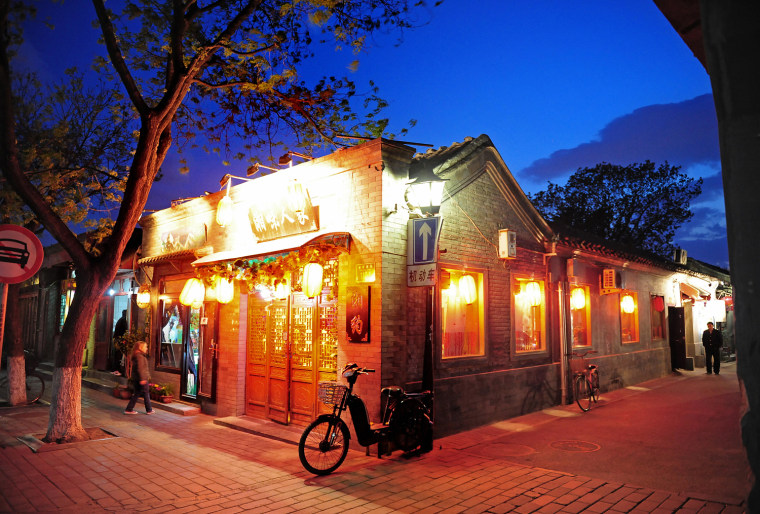
Appreciating old times
This picture taken on April 13, 2009, shows a old neighborhood in Beijing. That spring, thousands of workers in yellow helmets took to the streets of old Beijing for a major renovation of traditional houses, or at least those that survived the real estate frenzy of recent years.
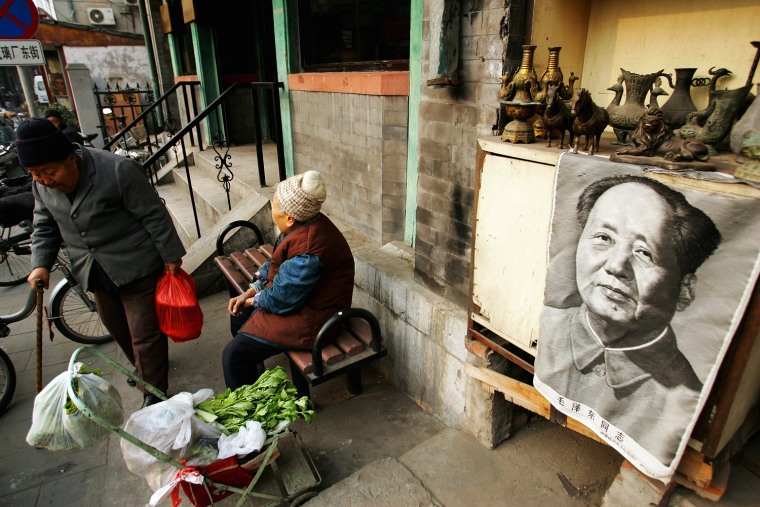
A mix of ancient and modern
These Bejing residents live at a Hutong, which are traditional alleyways that offer a glimpse at the city's history and old way of life. Hutongs were formed by the lines of traditional courtyard residences. Since the mid-20th century, the number of hutongs has dropped as new buildings and roads go up in the city.
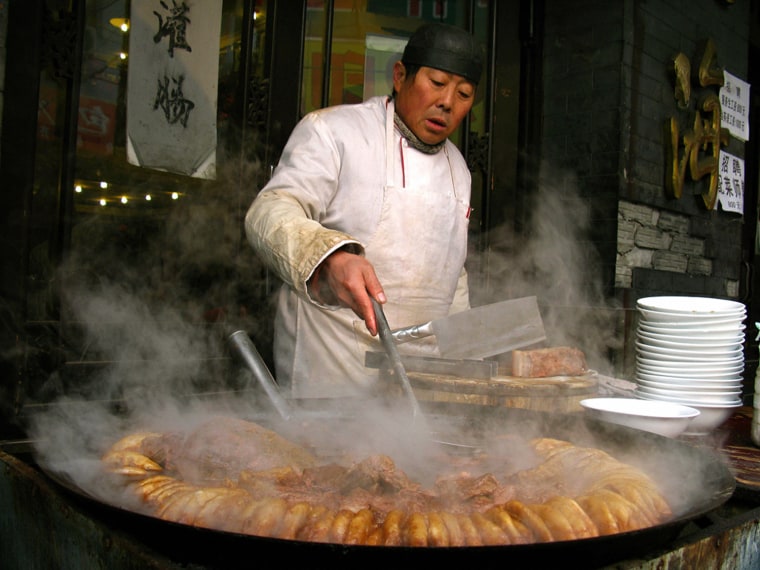
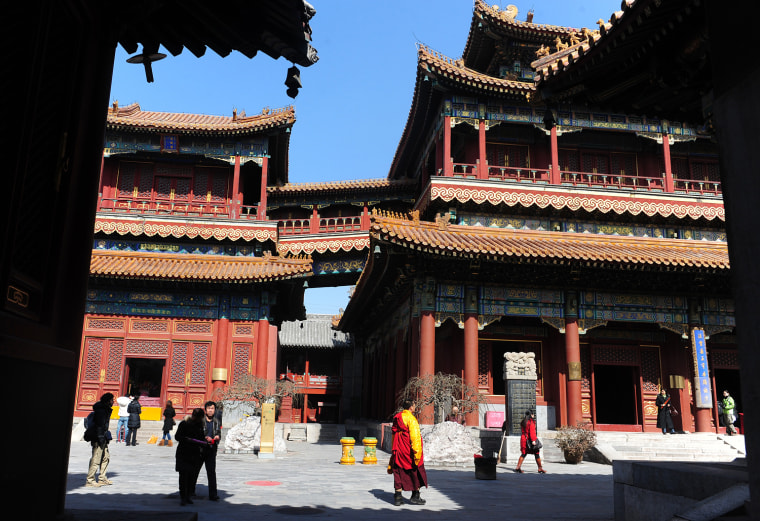
A Buddhist treasure
A Tibetan Buddhist monk walks on the grounds of the Yonghegong, also known as the Lama Temple, a temple and monastery belonging to the Geluk School of Tibetan Buddhism in Beijing on March 10, 2010. The temple is one of the largest and most important Tibetan Buddhist monasteries in the world.
The Temple has five large halls and five courtyards with beautifully decorative archways, upturned eaves and carved details. It has a treasury of Buddhist art, including sculptured images of gods, demons and Buddhas, as well as Tibetan-style murals.
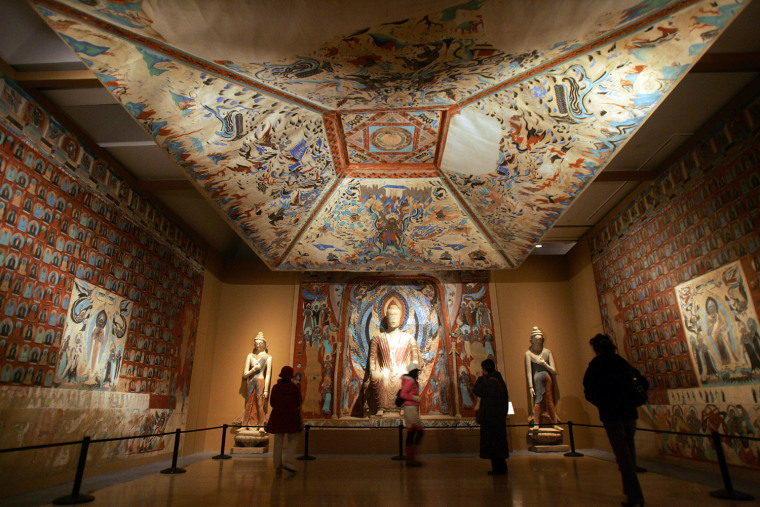
Colorful caves
Visitors view replica of parts of the Mogao Cave during the Dunhuang Art Exhibition at the National Art Museum of China on Jan. 21, 2008. The exhibition included recovered antres, original painted sculptures and their replicas, grotto fresco replicas, tiles relics and documents from Library Cave of Dunhuang.
Dunhuang, located in Northwest China's Gansu province, is renowned for its fresco caves, where the Buddhist paintings and sculptures were created in the 5th to 13th century.
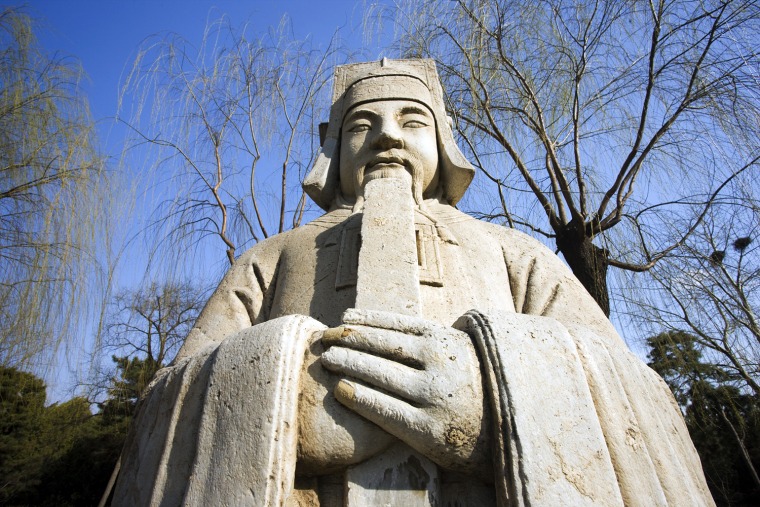
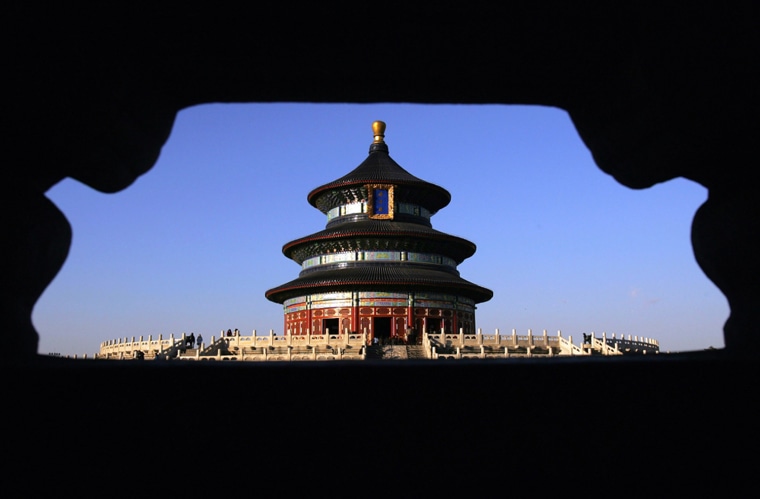
A towering landmark
The Hall of Prayer for Good Harvests is shown through the Temple of Heaven. The hall is a cone-shaped wooden structure with triple eaves. Its blue-tile roof is an easily recognizable emblem of Chinese imperial architecture outside of the famed Forbidden City.
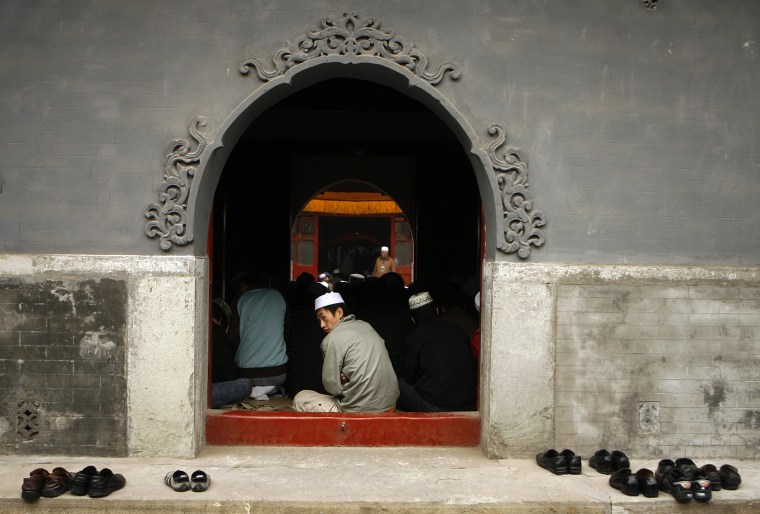
Old house of worship
Chinese Muslims gather to pray in the Niujie Mosque in Beijing to celebrate Eid Al-Fitr, the end of Ramadan and monthlong fasting on Oct. 13, 2007. Thousands gathered at this, Beijing's oldest and largest mosque, for morning prayer and to feast in food stalls and dance in the street.
The mosque, first built in 996, is the spiritual center for more than 10,000 Muslims in the area.
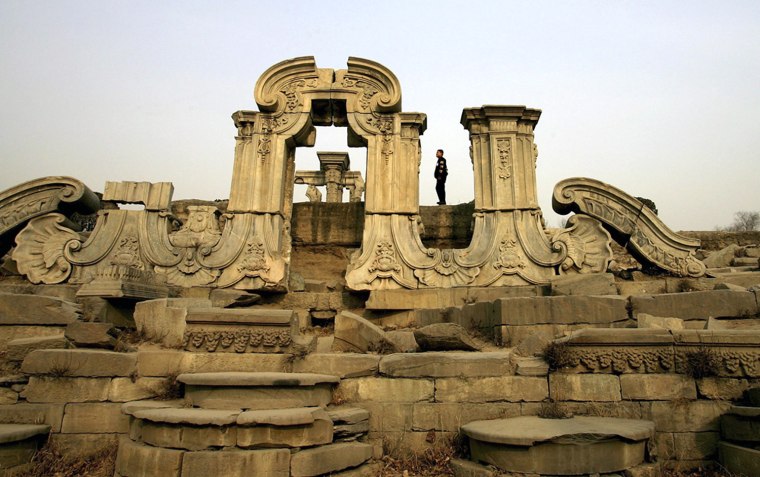
A palace in ruins
A man visits the ruins of Yuanming Yuan on Jan. 15, 2007 in Beijing. Yuanming Yuan, known as the Old Summer Palace, was composed of three independent gardens and covered an area of about 864.8 miles with up to one hundred landscape spots. It was sacked, looted and burned to the ground by the British and French troops in October 1860.
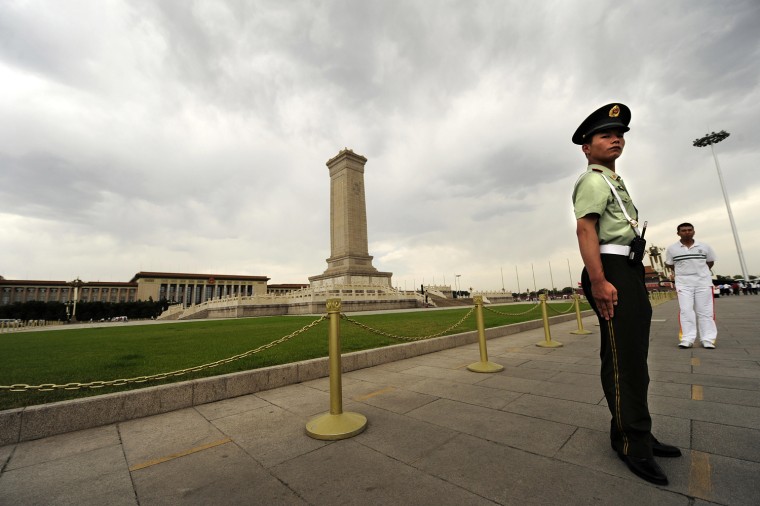
Remembering a movement
A Chinese paramilitary policeman stands guard in front of the Monument to the People's Heroes in Tiananmen Square in Beijing. The 10-story obelisk was built in the 1950s in memory of those who died during the revolutionary conflicts during the modern era.
The lower part of the marble tower is decorated with marble bas-reliefs showing the Chinese revolutionary movement over the past 100 years.
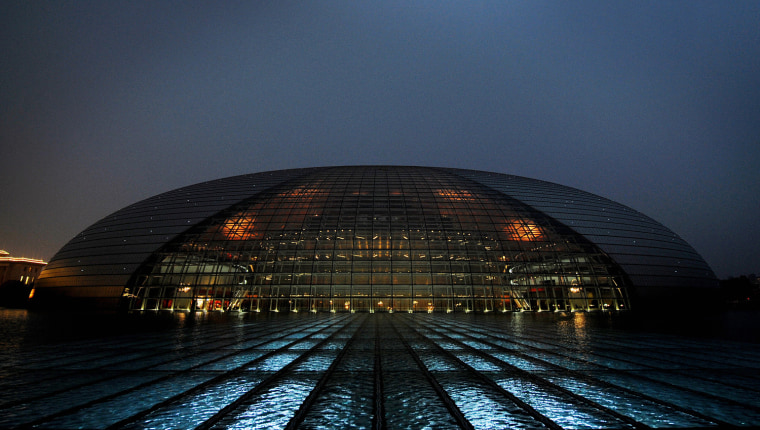
A futuristic take on the arts
Chinese tourists view the Center for the Performing Arts, which was designed by French architect Paul Andreu and situated near Tiananmen Square. The center includes a 2,398-seat opera house, a 2,019-seat capacity concert hall and a 1,035-seat theater.
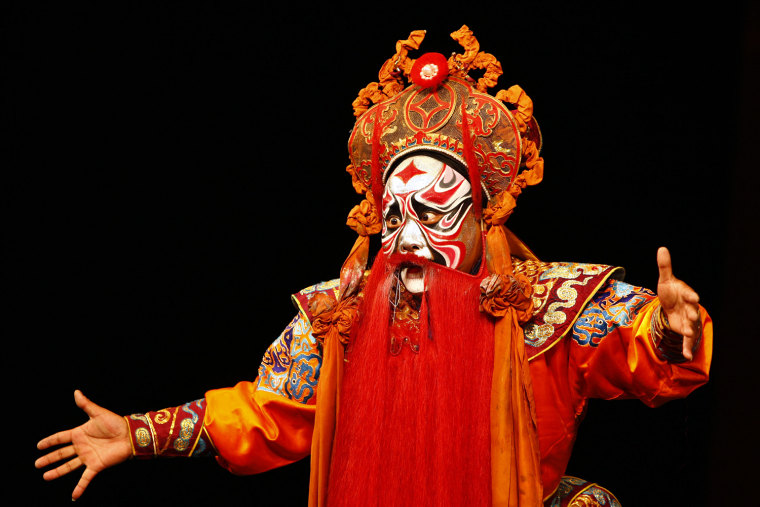
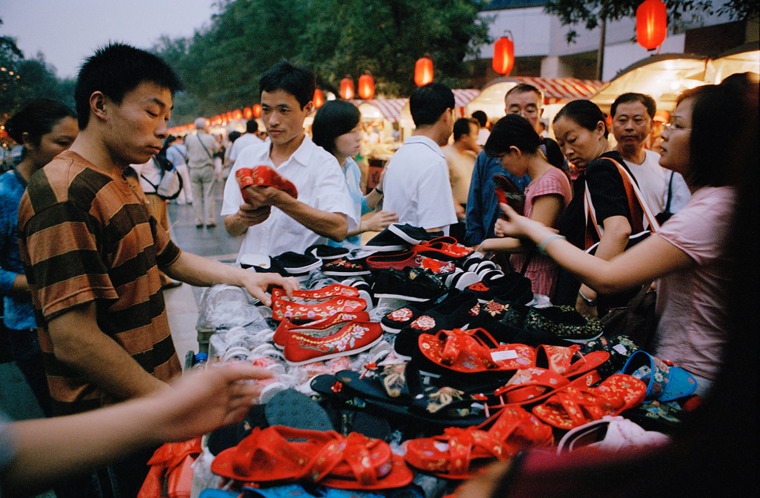
Shopping for deals
Customers line up at an informal stall selling traditional Chinese shoes in Wangfujing Snack Street. The snack street forms part the famous Wangfujing Street, which was pedestrianized in 2000. The snack street is popular with both tourists and Beijing residents, and has a whole row of pretty, brightly illuminated stalls selling a variety of food.
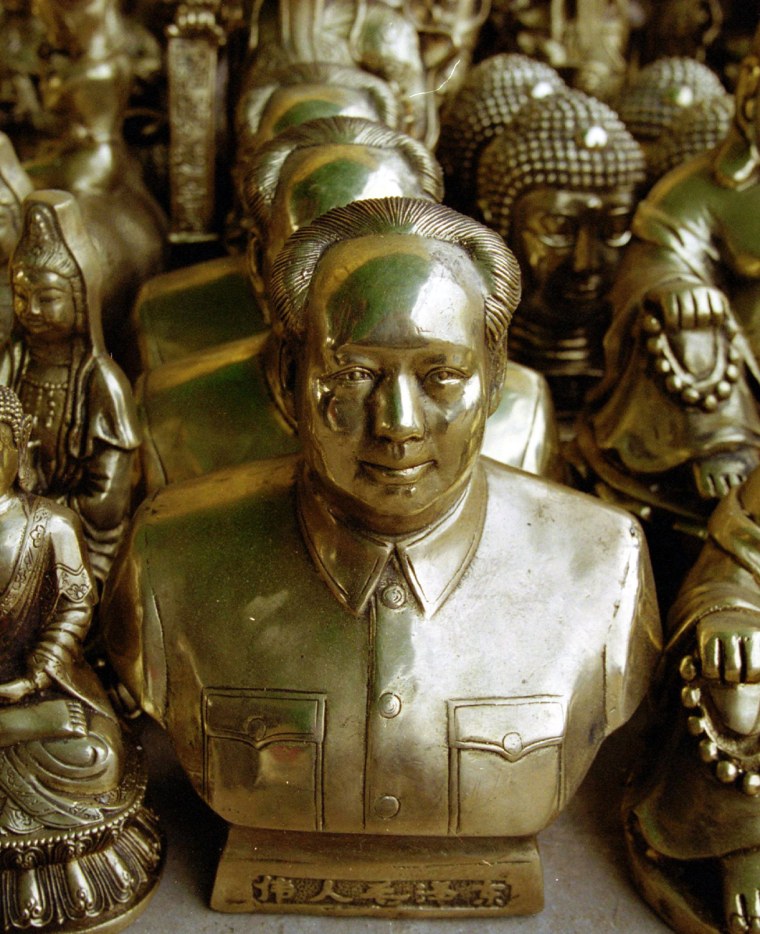
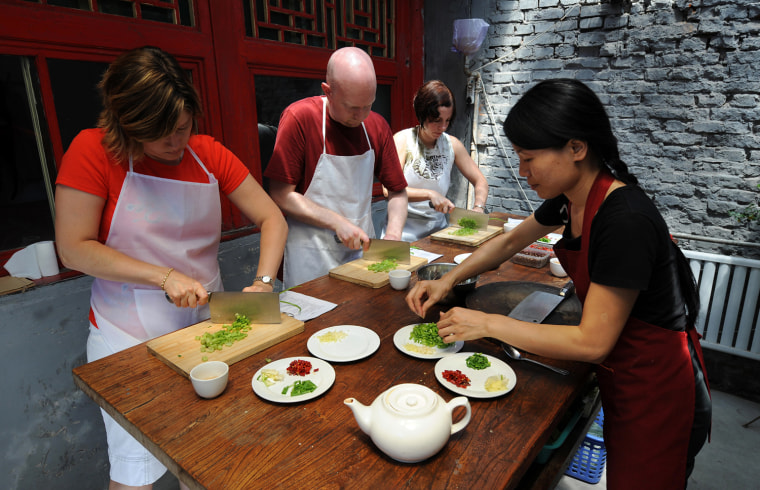
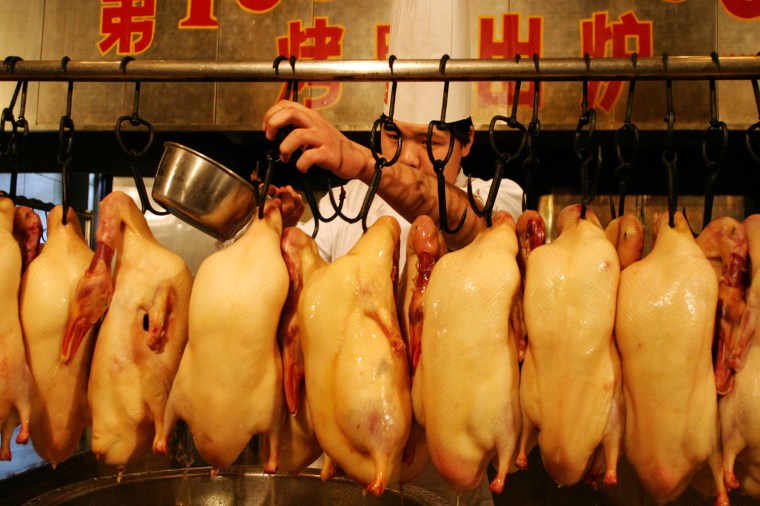
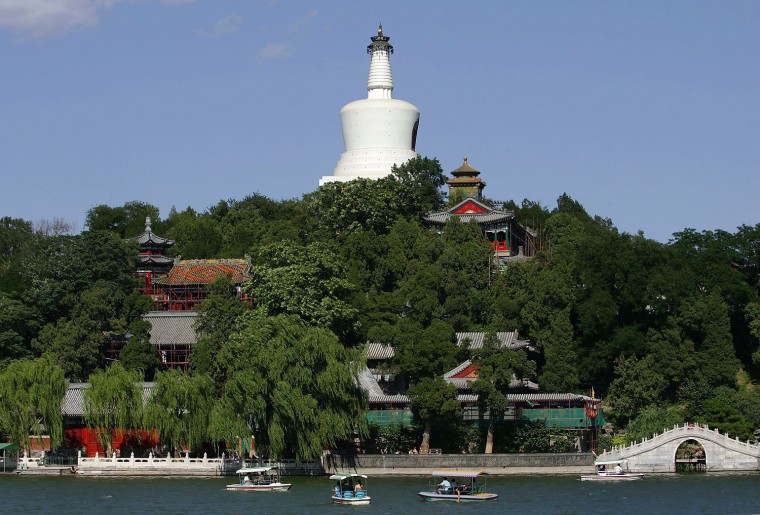
A park fit for a dynasty
People visit Beijing's Beihai Park, which is more than 1,000 years old and was built up through five dynasties as a royal garden. Beihai, which opened to the public in 1925, includes a 96.4-mile lake, pavilions and towers, and beautiful scenery.
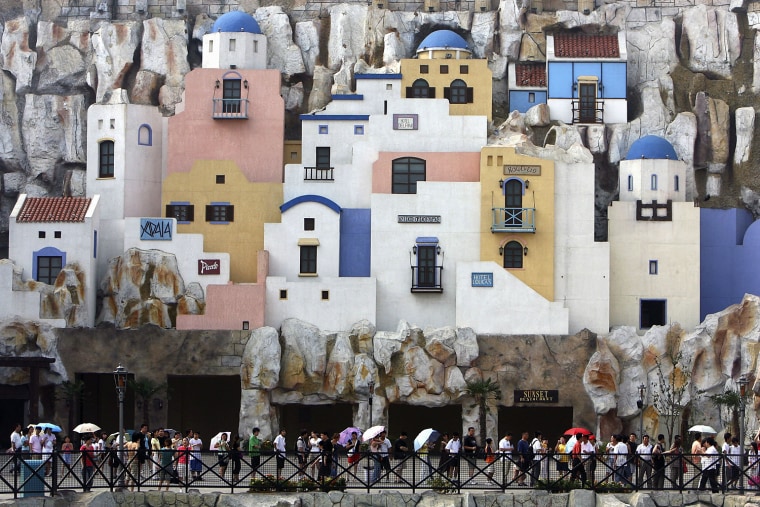
Waiting in 'Happy Valley'
Tourists line up to go on the "Flume Ride" at Chinese theme park Happy Valley in Beijing. Happy Valley, the biggest amusement park in China, consists of six theme parks. The park, which took four years to build, hosts more than 40 recreational facilities.
There are reportedly more than 2,000 theme parks in China, although the industry only started some 20 years ago, according to state media.
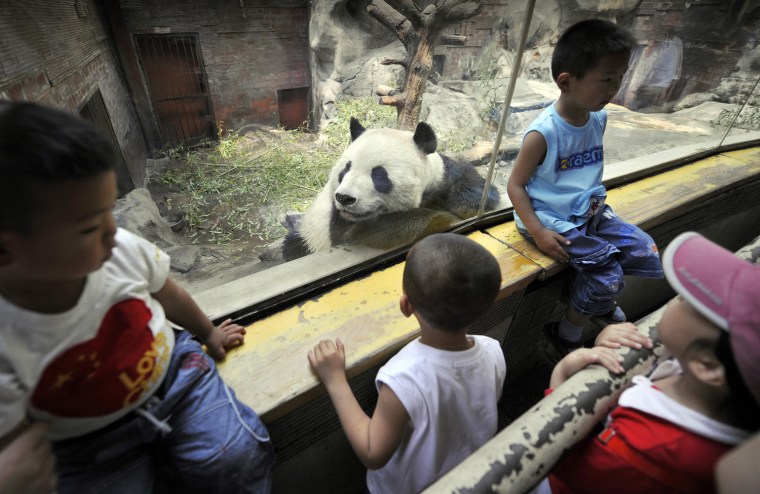
Making friends
Young visitors look at a giant panda at the Beijing Zoo, which houses rare Chinese animals, including the Golden Monkey, and selection of animals from around the world. The zoo is also a center of zoological research and conservation with a number of breeding programs.
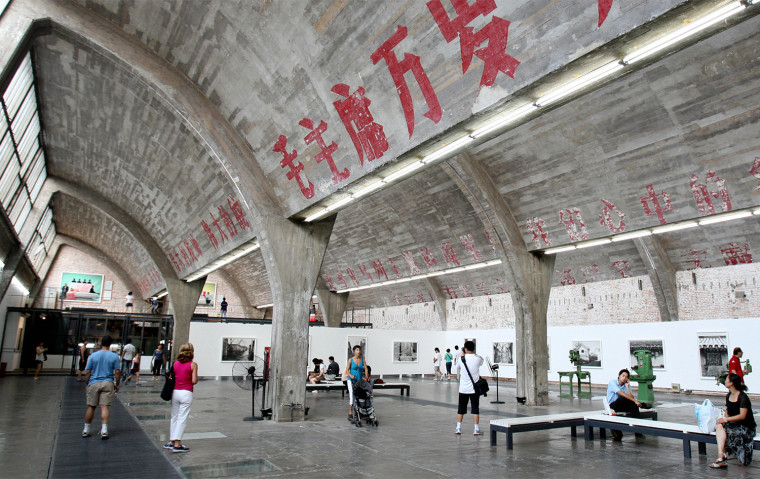
An artsy trend
People visit the 798 Space gallery, part of the Chinese contemporary art compound called 798 Art District or Factory 798 in the Dashanzi district of Beijing. The area, which is named after a former electronics factory, Factory 798, was divided up by artists into galleries and studios. The area is a thriving hub of trendy cafes, glossy galleries and eye-popping prices for works by the Chinese artistic elite.
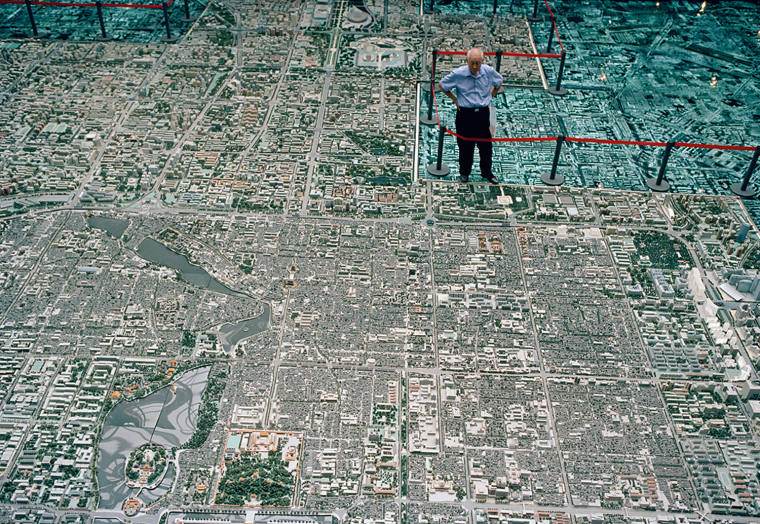
A model city
A man surveys a scale model of the entire city of Beijing. The display is a combination of photographic glass, which people can walk on, and exact scale relief models of the city. This impressive exhibition is at the Beijing Planning Exhibition Hall, a urban planning museum focusing on Beijing both new and old.
